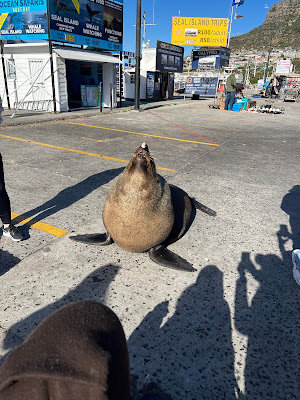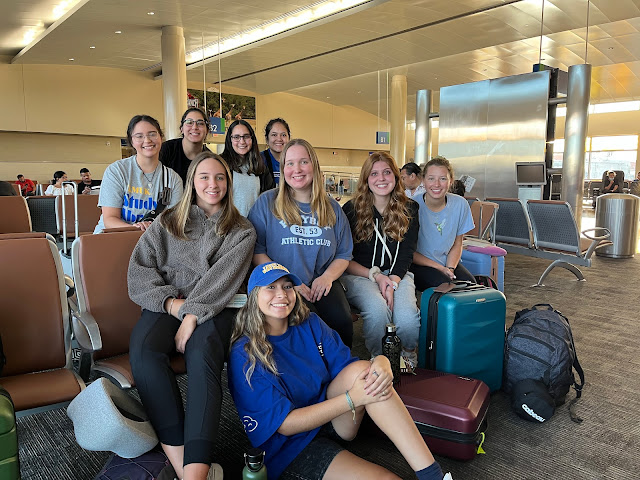On Wednesday, our group had the opportunity to tour a local art exhibit, "Rugby Gives Me An Eerie Feeling," by the Filthy Plinths. It featured 5 pieces titled: "No Parking," "Hyper Wholesaler Hawkers Line," "Rugby Gives Me An Eerie Feeling" (the title piece), "Fast Deadly," and "Empty Promises." Each piece is comprised of different photographic elements which were combined into large collages. Located in a former church, the pieces, done by Stellenbosch University students, were shaped as arches to reflect the architectural details of the building, such as doors and windows. "No Parking" At first glance, the artwork seems to offer only a colorful window of life within South Africa. However, as the viewer examines each piece, the artwork becomes more jarring. Beautiful elements, such as landscapes and smiling people, are juxtaposed with grittier images, such as poverty and political propaganda.\ Altogether, the exh...


















